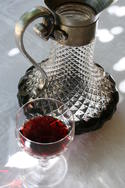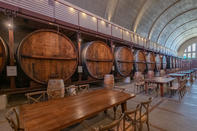Tale as Old as Time

The grape is but a small fruit with a soft shell and a sweet, fleshy interior that, when fermented, creates the liquid of the gods - good ol’ wine. There is definitely some truth behind the popular saying “Aging like fine wine…”, because, if you didn’t know, wine ultimately gets better with age.
Winemaking is a tale as old as time: it has been an agricultural practice in various countries for centuries, changing and improving with every generation. The process of aging wine is a unique craft in its own right, that has been passed down from wine master to student for many years.
The complexities of aging wine allow for the liquid to take on a whole new character - a new aroma, a different colour and transformation of the flavour. Although not all wines are built to last, many variations actually taste much better as they age. So before you open your next bottle of vino, take the following into consideration.
Better with Age

Wine is essentially like a kaleidoscope: The same elements constantly form new images, and at no two junctures will a bottle of wine be the same. As it is a solution of alcohol, acids, phenolic and flavour compounds, wine is a complex substance, and elements such as water, glycosides, alcohols and acids are constantly reacting with one another. This makes the aging process all that more interesting because you don’t quite know how the wine will turn out. Sometimes it will change drastically, and other times it won’t. It really depends.
The most obvious change during maturation is the colour of the wine. A young red wine will go from a deep burgundy/violet to a clear reddish-orange, while a young white will go from a bright clear colour to a deeper gold/yellow. A 30-year old bottle of Merlot may or may not be vastly different in colour to that of a 3-year old bottle, but it will surely taste and smell different. This is because it becomes mellower and smoother, with a richer mouthfeel, which improves the wine’s sensory appeal. The yeasty smell also fades, replaced with a new aroma of various origins - with reds, hints of earth and honey might come through, and with whites, notes of herbs and leaves. Weird, but true.
As wine matures, the quality of the liquid does not deteriorate as many might believe. Rather, it enhances the flavour, texture and aroma. Premium varietal wines such as Chardonnay, Sauvignon blanc, Cabernet Sauvignon and Merlot are matured for longer periods of time in oak barrels, while crisper whites, light reds and Rosés are produced for a shorter shelf life.
Next time you spot a vintage selection in your local retailer, add a thought of appreciation as you add it to your cart - not to drink now, but to savour later.